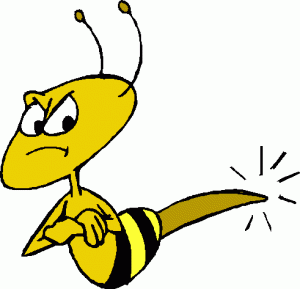 Despite an unpleasant encounter with a Mexican bee a couple weeks ago, there is still a great need for the proliferation of the species – though that particular one didn’t make it.
Despite an unpleasant encounter with a Mexican bee a couple weeks ago, there is still a great need for the proliferation of the species – though that particular one didn’t make it.
Taking a day-long sabbatical from playing the delightful El Camaleon Golf Club, which will play host to this weekend’s PGA Mayakoba Golf Classic at the Fairmont Mayakoba, just south of Cancun, a group detoured to the unspoiled Sian Ka’an Biosphere Reserve where a jungle walk through Mayan ruins ended at crystalline waters. There, lunch was served not only to our tour, but to that bee who decided to take a bite out of my bootie.
I have been stung by bees before, and come to think of it, the scene of the crime has always been on golf courses. Once while near a course Snack Shack, another while taking a drink from a can of lemonade on the golf cart, and yet another time while playing in a USGA Qualifying round for the Women’s Amateur Public Links national championship in Charlottesville, Virginia. But getting stung while sitting down for a repast of freshly-made Ceviche, tortillas, and white wine, well now that was a first.
Our Mayan guide, Alberto, had been amazing us all morning with his knowledge of jungle cures and remedies for every ailment under the Mexican sun. When I felt the jab, I immediately asked him to check out my behind, tactfully and professionally of course.
“Yep, that’s a bee sting…….but do not have what I need to put on it here.” Oh Alberto, of all the injuries in all the jungles in all the world, I have to be victim to the one cure you don’t have. Fortunately, I’d put a bee sting packet in my knapsack for the tour. Strange, in that I have never done this before and I’m not even sure why the ointment was in the carry-on golf pouch I always bring on golf trips. And, when leaving the Mayakoba that morning, I was already out the door, remembered I’d seen it somewhere, and turned right back around to retrieve it. Clairsentience? I’m told I have it.
The sting calmed down and was pretty much a non-issue within 10 minutes. I ate Ceviche and crunched tortillas. I drank wine. All was well. Until two days later. Back in Michigan now, I woke up and there, surrounding my sting was an angry red circle about the size of a baseball – puffed-up. Thoughts turned to the Killer Mexican Bees I’d heard about a few years back and my mind went racing. “Hmmm, I’ve been stung before but never out of the country – and certainly not by Mexican Bees!” I watched in dismay as the swollen area continued to spread. By nighttime, the baseball had transformed into a softball. I’d also developed a nasal stuffiness and congestion associated with allergies. Could it be(e) trouble??
An Internet diagnosis proved to be calming: 24-48 hours can lapse before these symptoms normally appear, with the area healing in about 7 days. Whew! It has been 9 days and finally, my ‘strawberry’ is gone.
Bee-fore condemning them for the attack, it is interesting to note that I came across some good information about our friendly bee population, much of which should concern all golfers:
Alarming collapses of bee colonies have hit the news in the last few years. About 30-40% of all bee colonies are dying. The top killers are disease, pesticides, and get this: not enough flowers.
So why is that of interest to us? According to bee researcher and University of Minnesota Entomology Professor Marla Spivak, “There aren’t enough flowers out there for bees anymore. Corn and soybean crops provide basically nothing for the bees. And we use a lot of herbicides to get rid of all those weedy plants on our roadsides and crop borders and golf courses, so there aren’t enough flowers to provide nectar and pollen for bees. The flowers they do find are contaminated with pesticides, which can weaken bees and make them susceptible to disease.”
Besides my concern for the flowers, my other question is, ‘if corn and soybean crops provide nothing for the bees’ then what are these crops providing for us, the major consumers of soy and corn? Genetically modified organism (GMO) technology introduced into these mega-crops is affecting bees already, in the form of non-nutrition. Are we next….or already there?
Environmental concerns are all over the golf course map these days but rarely has anything been said or done about planting more flowers to aid pollination. In fact, sometimes architects are criticized for doing the ‘pretty flower’ thing with beds and plantings and are reminded that these are not in keeping with the natural course features. Perhaps they might have been before the land was torn apart to build the golf course. The hard truth is, that without bees and what they do, life as we know it would cease to exist…..not to mention golf courses too. And for that, I’m a little bit sorry my bee is now history.
Here’s a couple more gems about bees: did you know that, just like golfing buddies, bees all have different personalities? Some are laissez-faire, some are busy, others are noisy, and some are cranky? The next time you face an offensive or disagreeable person, you may wish to recall one particular facet of bee-havior: when a Queen produces honeybees which can recognize a colony resident infected with hive-threatening diseases, they collectively throw out the infected bee. No trial. No civil rights. No medical advocate. No appeal. Not quite what we humans do…..but just think if we could settle the score this way with an offensive member of our golfing foursome?
